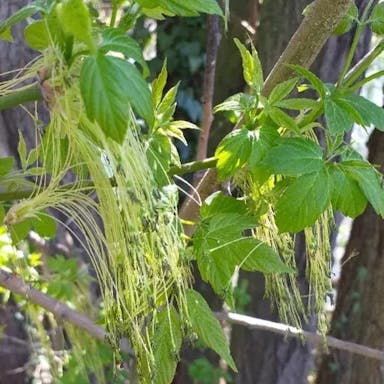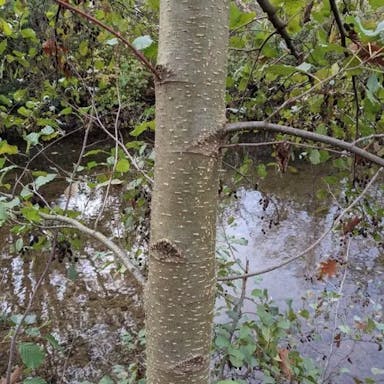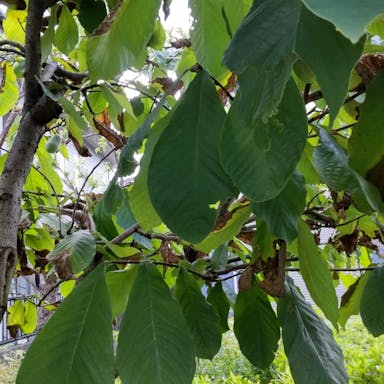Kashmir cypress, scientifically known as Cupressus cashmeriana, is a coniferous tree native to the Himalayas. The tree produces small, round cones that contain seeds with wings. The name
Kashmir cypress
- Scientific name
- Cupressus cashmeriana
Basic Information
- Cupressaceae Family Cupressus Genus Kashmir cypress Species
- Cupressaceae > Cupressus > Cupressus cashmeriana
- 83%
- The Completeness of This Encyclopedia
Please help us complete the encyclopedia, Terrarium is a encyclopedia service to be completed with everyone in the world. Currently, this page is 83% complete. For more information on how to contribute, please click here.
- Indeciduous tree
- Tree
- Height
- 2000cm ~ 4500cm
- Flower Color
- Leaf Color
- Anthesis
- Sunlight Exposure
Full Sun Long hours of sunlight from morning to afternoon Partial Shade A location in the shade of a tree or where either the morning or afternoon is shaded Full Shade A place where there is no direct sunlight
- Hardiness Zones
This is an indicator to know to which zone each plant can winter. Knowing the zone of each plant gives you an idea of the cold temperature resistance when grown in the ground without a roof. 2: -42.7 to -40.0 3: -39.9 to -34.4 4: -34.3 to -28.9 5: -28.8 to -23.3 6: -23.2 to -17.8 7: -17.7 to -12.2 8: -12.1 to -6.7 9: -6.6 to -1.1 10: -1.0 to 4.4 11: 4.5 to 10.0
- 8
- Cold resistance
- Good
- Heat resistance
- Fair
- Habitat of origin
- Bhutan, India
- Growth Rate
- Normal
What is Kashmir cypress (Cupressus cashmeriana)?
What is Kashmir cypress (Cupressus cashmeriana)
Flower meaning
The flower language commonly used in America for the Kashmir cypress is: - Mourning - Sorrow - Sadness One typical example is
Calendar of Kashmir cypress (Cupressus cashmeriana)
Calendar
Kashmir cypress typically blooms in the United States during the spring season. Providing good care, with regular water and pruning spent blooms, can help flowering last longer. The flowers of this plant are at their best during the month of May. Blooming usually occurs once a year, lasting for a few weeks. The period required for full blooming can vary depending on environmental conditions. To extend the blooming period, ensure the plant receives adequate sunlight, water, and nutrients. Pruning dead flowers can also promote continuous blooming.
How to grow Kashmir cypress (Cupressus cashmeriana)
Watering
For the dry season of fir trees, watering frequency should be occasional, usually when the land is empty every 10-14 days. Guarantee the earth empties well to prevent waterlogging, which may start under root decay. During the inactive period, cut down watering to once in three weeks to imitate natural states. Observe land wetness amounts by putting a finger into the earth up to fifth to check dry condition. Hydrate the fern thoroughly, permitting excess aquatic to empty from the container or soil. Modify watering rate based on surrounding states like hotness and wetness.
Soil and Fertilizer
The Mediterranean cypress grows well in soils that drain excellently and are somewhat acidic, with a pH range of 5.5 to 6.5. It needs a soil abundant in natural materials to back its expansion and maturation. Put fertilizer on at the beginning of spring before new growth starts, utilizing an even slow-discharge fertilizer. Spread the fertilizer uniformly around the foundation of the plant, following the producer's guidelines for the right sum. Keep away from fertilizing during the lethargic winter months to forestall supplement washing. Frequently screen the dirt quality to guarantee it stays reasonable for Mediterranean cypress. Consider directing soil tests occasionally to change fertilization practices in like manner.
Sunlight and Place
Overall, it is a hardy plant that can withstand various sunlight conditions with proper care. Kashmir cypress thrives in full sun to partial shade, preferring at least 6 hours of direct sunlight daily. The plant should be placed in well-draining soil to prevent waterlogging. It exhibits excellent cold tolerance, able to withstand temperatures as low as -20°F (-29°C). It has good heat tolerance, but it benefits from some protection in extremely hot climates. It thrives in a wide range of temperatures, with an optimum range between 50-80°F (10-27°C). During summer, it may require more watering in hot, dry conditions. In winter, it is important to protect it from harsh winds and heavy snowfall.
Advanced Information of Kashmir cypress (Cupressus cashmeriana)
Pruning
Kashmir cypress benefits from pruning to maintain its shape, promote healthy growth, and prevent overcrowding. Clean up dead, damaged, or diseased branches first. Followed by crossing or rubbing branches. Avoid cutting back into old wood. After pruning, ensure clean cuts. Get rid of pruned material properly. Regular pruning helps Kashmir cypress thrive. And enhances its overall appearance.
Planting and Harvest
Good drainage is necessary for container planting of the slow-growing Kashmir cypress. Use a porous pot and soil mix. Give bright light without direct sun. Repot every few years into a somewhat larger container as the roots expand. Carefully loosen bound roots when repotting and add new soil. Watch for poor growth which could mean root-binding or problems like pests, overwatering, or insufficient light. Prune routinely to keep the desired shape and size of this compact tree.
Propagation
Kashmir cypress can be propagated through seeds, cuttings, and layering. For propagation, utilize a combination of methods. Collect mature, dry seeds and take cuttings from plants devoid of disease. To multiply, bend and bury a lower branch, permitting it to establish roots before separating. For optimum results, sow seeds in a sunny area with drainage and root semi-hardwood cuttings in late summer in a moist medium.
Pests and Diseases
Kashmir cypress prone various disease pests like canker fungus, infections root rot. Sadly lead withering, death. Fungal canker disease causes die branches. Prevented keeping good moving air, no spraying water overhead. Root rot happen overly wet dirt. Stopped ensuring well drained land. Tiny cypress aphid bugs feed juice plant. Make needles turn yellow, hinder growing. Managed insecticidal cleanser oil neem. Crucial watchfully plant any warning signs illness bugs promptly take right steps.
Habitat of Kashmir cypress (Cupressus cashmeriana)
Habitat
Toxicity of Kashmir cypress (Cupressus cashmeriana)
Health Benefits
- edible
- Inedible
- Toxic
- No toxicity
NO DATA
Toxic for dogs and cats
NO DATA
Q&A of Kashmir cypress (Cupressus cashmeriana)
- choice
Kashmir cypress offers two main varieties: 'Green Prince' and 'Blue Ice'. When choosing seeds, select ones from trusted sellers to ensure authenticity. For seedlings, pick ones with sturdy stems. Give priority to young plants with no disease or pest issues. Confirm the soil drains well and the site gets sufficient sunlight for best growth.
0
0












